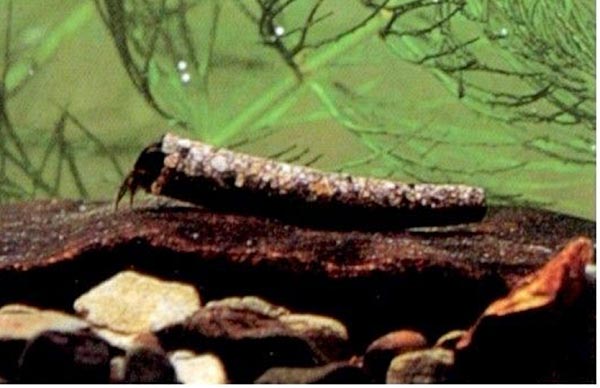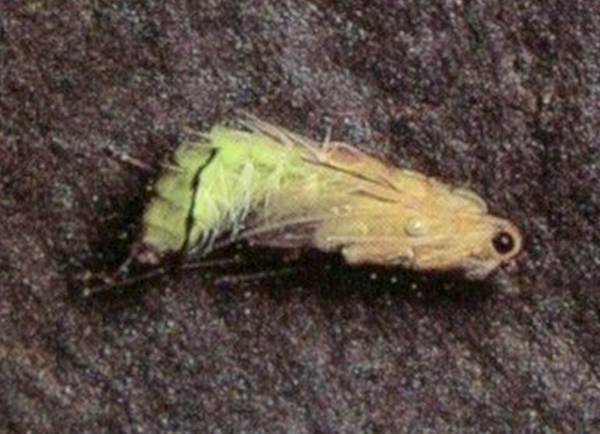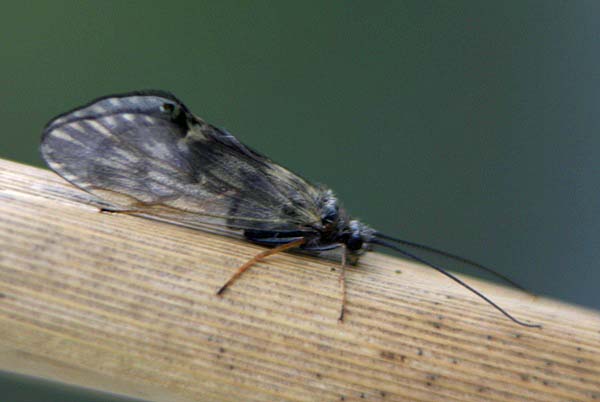Trichoptera - the Caddis or Sedge Flies
This is quite a large order of insects with wings which, when at rest, are held along the body in the form of a ridge tent. A characteristic of flies of this order is the long antennae - in many species more than double the body length.
There are 300 or more species of sedge flies in the British Isles but most are rare, very small or totally nocturnal, so that the number of particular interest to flyfishers is actually quite small.
Life Cycle
There are around two hundred species of sedge flies in the British Isles. Many adult sedge flies are nocturnal. There are, however, some that hatch by day - the Grannom is an example - and many more whose emergence at dusk extends the evening rise. They are found in all sorts of waters from chalk streams and lowland reservoirs to mountain torrents and moorland lakes.
Sedge flies go through egg, larva, pupa and winged adult stages. This life cycle is generally completed in one year, for most of which the insect is in its larval form. The pupal stage typically lasts a month or less and the adults can live for a few weeks.
Larvae

Sedge flies begin life as caterpillar-like larvae, commonly called caddis grubs. The majority of species live in portable cases which they build from materials gathered from the bed of the stream or lake.
Sedge Pupae

When the larva is fully grown, it becomes a pupa. Inside the pupal case the miracle of metamorphosis takes place over a period of several days or a few weeks. When the adult is fully developed inside the pupal shuck, the insect bites its way out of the end of the larval case and swims up to the surface.
Adult sedge flies

Sedge flies have two pairs of wings which, when at rest, are held along the body in the form of a ridge tent. A characteristic of flies of this order is the long antennae - in many species more than double the body length.
When sedge flies return to lay their eggs on moonlit nights a buoyant artificial fly can give great sport.
References
O'Reilly, Pat. (1997; 8th reprint 2010) Matching the Hatch. Shrewsbury: Quiller Publishing.
Barnard, P & Ross, E. (2007) A Guide to the adult caddisflies or sedge flies (Trichoptera). Taunton: Field Studies Council.
Wallace, I. (2006) Simple Key to Caddis Larvae. Taunton: Field Studies Council.
Wallace, I.D., Wallace, B., & Philipson, G.M. (2003) Keys to the Case-bearing Caddis Larvae of Britain and Ireland. Ambleside: Freshwater Biological Association.
Macan, T.T. (1973) A Key to the Adults of the British Trichoptera. Ambleside: Freshwater Biological Association.
Excited at the prospect of flyfishing? So are we, and we're pretty sure you would find the Winding River Mystery trilogy of action-packed thrillers gripping reading too. Dead Drift, Dead Cert, and Dead End are Pat O'Reilly's latest river-and-flyfishing based novels, and now they are available in ebook format. Full details on our website here...
Buy each book for just £4.96 on Amazon...
Please Help Us: If you have found this information interesting and useful, please consider helping to keep First Nature online by making a small donation towards the web hosting and internet costs.
Any donations over and above the essential running costs will help support the conservation work of Plantlife, the Rivers Trust and charitable botanic gardens - as do author royalties and publisher proceeds from books by Pat and Sue.




